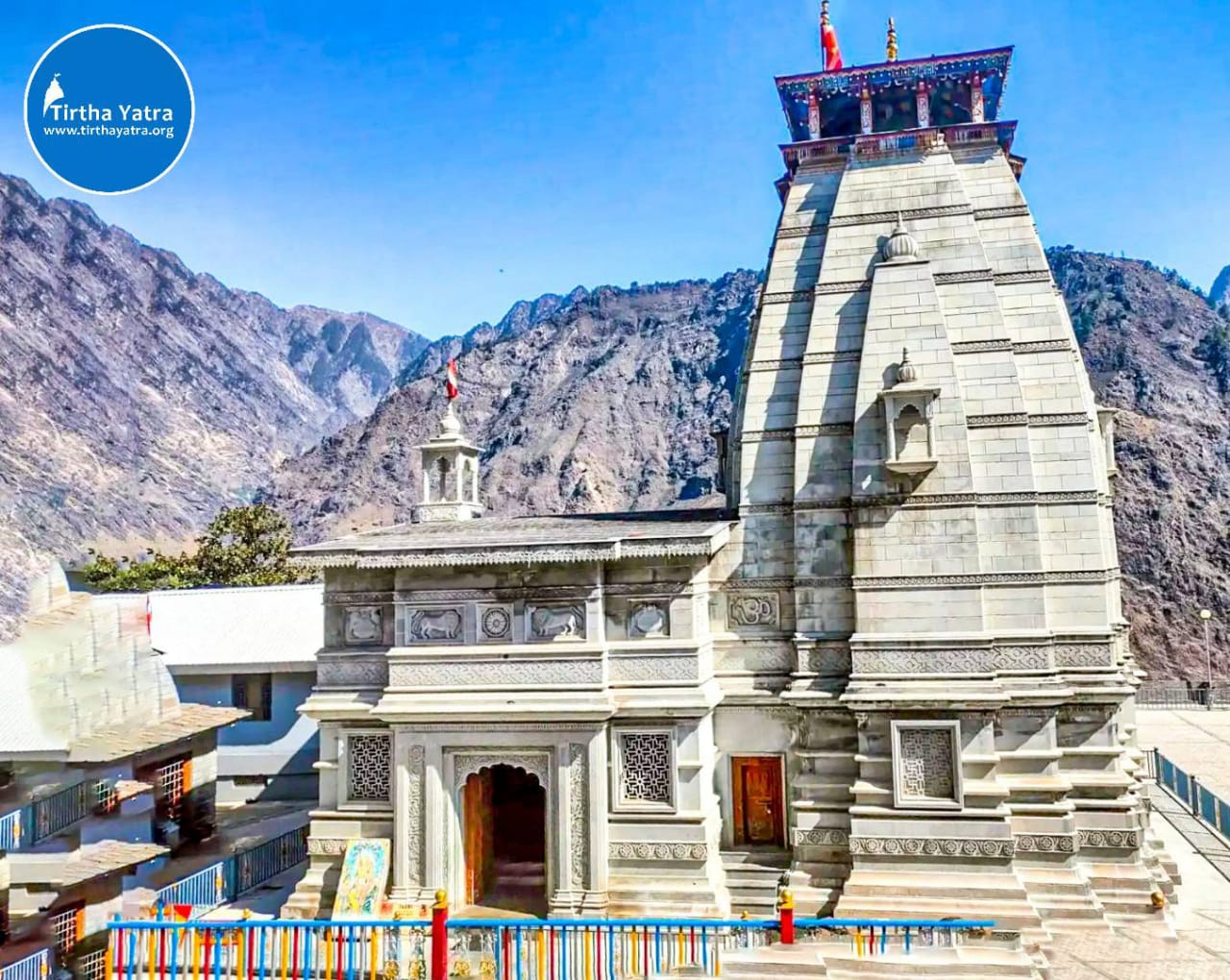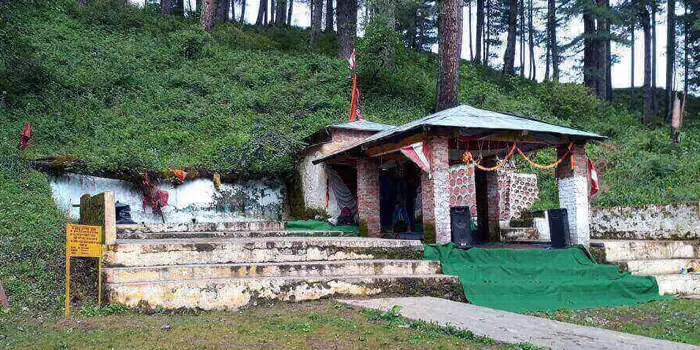
Narasimha Temple, Joshimath in Uttarakhand is dedicated to Sri Narasimha Dev – the avatara of Lord Vishnu. The temple is situated in a solace atmosphere at an elevation of 6,150 feet (1,875m). The Narasimha temple, Joshimath is a prominent stop enroute Badrinath Dham. It grasps one’s attention with the backdrop of the scenic beauty of snow-capped mountains and lush green forests. The pilgrims seek the blessing of Sri Narasimha Dev before accessing the Badrinath temple. It is also believed that the Narsimha temple, Joshimath acts a key towards unlocking the treasure of Lord Badrinath darshan.
The temple’s location in the Himalayan region adds to its spiritual allure. It is the Uttaramnaya Mutt or the northern seat of Shankara Mutt, one of the four cardinal institutions established by Adi Shankaracharya, the others being at Shringeri, Puri, Dwaraka and Kanchi. The temple offers devotees a chance to reflect on the virtues of courage, justice, and protection embodied by Sri Narasimha Dev, helping them find inner strength and clarity.
Narasimha Temple, Joshimath is one of the 108 Srivaishnava Divya Deshams as sung in the hymns of Alwars, known as the Divya Prabhandams or Paasurams.
The history of Narasimha temple, Joshimath
The temple unfolds the deep history where in between the 7th and 11th centuries C.E., Katyuri kings ruled the area of varying extent from their capital at “Katyur” (modern day Baijnath) valley in Kumaon. The Katyuri dynasty was founded by Vasudev Katyuri. The ancient Basdeo temple at Jyotirmath is attributed to Vasudev. Vasudev was of Buddhist origin, but later followed Vedanta practices and the Vedanta practices of Katyuri kings in general is sometimes attributed to a vigorous campaign of Adi Shankaracharya.
According to Badri Datt Pandey in his book ‘Kumaon Ka Ithias’, Joshimutt was the original capital of the Katyur dynasty before it moved to Kartikeyapur (modern day Baijnath). According to the history, king Vasudev was a devotee of Sri Narasimha Dev.
One day he went hunting and Sri Narasimha Dev came to his home disguised. His wife offered food to the Lord. After eating the food, the Sri Narasimha Dev went into the king’s room for some rest. When the king returned from hunting, he got angry after seeing a man resting on his bed. He took his sword and cut the left hand of Sri Narasimha Dev. Instead of blood, milk started oozing from the wound.
After seeing this, the king realised the disguised person was not a common man. He asked for forgiveness from Sri Narasimha. The Lord said he came because he was happy with his kingdom but after this incident, he cursed the king to move to a new location (Baijnath). Because of this wound, the Deity in the temple also has a weak left hand. The Sanat Samhita states that the gradual thinning of the Deity’s left arm will someday culminate in the prophetic event associated with Bhavishya Badri.
The architecture of Narasimha temple, Joshimath
The Narasimha Temple, Joshimath is an architectural splendour, beautifully showcasing the traditional North Indian (Nagara) style of temple construction. The temple is modest in scale, yet its intricate stonework and striking design leave a profound heartful impression. This temple has been recently erected as the old temple worn off with the evolving times.
The Narasimha temple,Joshimath garbha griha has a striking Deity of Sri Narasimha Dev, the half-man, half-lion avatar of Lord Vishnu. The Deity is made of Shaligrama Shila, is around 25 centimetres in height and features Sri Narasimha Dev with a lion’s face and a human body. The Deity’s eyes are believed to carry a penetrating gaze that embodies both strength and compassion. The details are almost faded due to the time and one can have darshan of the form of Sri Narasimha Dev only. Most of the time the Deity is covered in jewellery and the clothes making it difficult for the devotees to relish the complete form of the Deity.
The garbha griha also houses the Deities of Chandika Devi, Kubera, Badri Vishal, Sita Ramachandra with Lakshmana and Garuda.
How to reach Narasimha temple Joshimath
To experience this temple in its full potential, travel with Tirtha Yatra on its world best Pancha Badri Yatra. Everything will be taken care, and you need not worry about any arrangements be it transport / accommodation / Pujas at the temple. Below are the ways to reach Joshimath if you wish to explore it on your own.
By Road: From Rishikesh and Haridwar: Joshimutt is approximately 250 kilometres, both of which are major hubs for travellers heading into the Himalayas. You can take state transport buses or private buses from Rishikesh, Haridwar, or Dehradun. Shared Taxis and Private Cars: Shared taxis and private cabs are also available and are a faster, more comfortable option, though they can be slightly more expensive than buses.
By Air: Nearest Airport: The closest airport to Joshimutt is the Jolly Grant Airport in Dehradun, located around 270 kilometres away.
By Train: The nearest railway station is in Haridwar, which is well-connected by trains to major cities like Delhi, Lucknow, and Mumbai.
Places to visit nearby Narasimha Temple, Joshimath
Shankaracharya Mutt – This is the religious institution established by Sri Adi Shankaracharya in the 8th century when he visited Jyotirmath. Known as Jyotirmath or Shankaracharya Mutt, it is one of the four main mathas he established across India. The math is a centre for Advaita Vedanta teachings and draws devotees interested in Shankaracharya’s spiritual legacy.
Bhavishya Badri Temple – It is located about 17 kilometres from Joshimath, in the small village of Subhain. This temple is connected to a prophecy that states it will be the site of Lord Vishnu’s worship when Badrinath becomes inaccessible. The Bhavishya Badri Temple is thus considered to be an important future pilgrimage destination.

Tapovan Hot Springs and Temple – Topavan is located around 10 kilometres from Joshimath, accessible via a short drive and a short trek. Tapovan is known for its natural hot springs and offers scenic views of the mountains. There is a small temple here dedicated to Lord Vishnu and sages who are believed to have meditated here.
Vasudeva Temple – Vasudeva temple is in the heart of Joshimath, this ancient temple is dedicated to Lord Vasudeva, another form of Lord Vishnu. It is a beautiful temple with intricate stone carvings and is one of the main places of worship in Joshimath.
Kalpeshwar Temple – Kalpeshwar Temple is located approximately 30 kilometres from Joshimath, requiring a short trek from the village of Urgam. This is one of the Pancha Kedar temples and is dedicated to Lord Shiva. It is the only Kedar shrine accessible throughout the year and houses a unique manifestation of Shiva in the form of matted hair (Jata).
Nandadevi Temple – Nandadevi Temple is located about 25 kilometres from Joshimath, in the village of Lata. Dedicated to Nanda Devi, the revered mountain goddess of the Garhwal region, this temple is important in local culture and is linked to the Nanda Devi Raj Jat Yatra, a significant pilgrimage and festival.











Leave a Reply